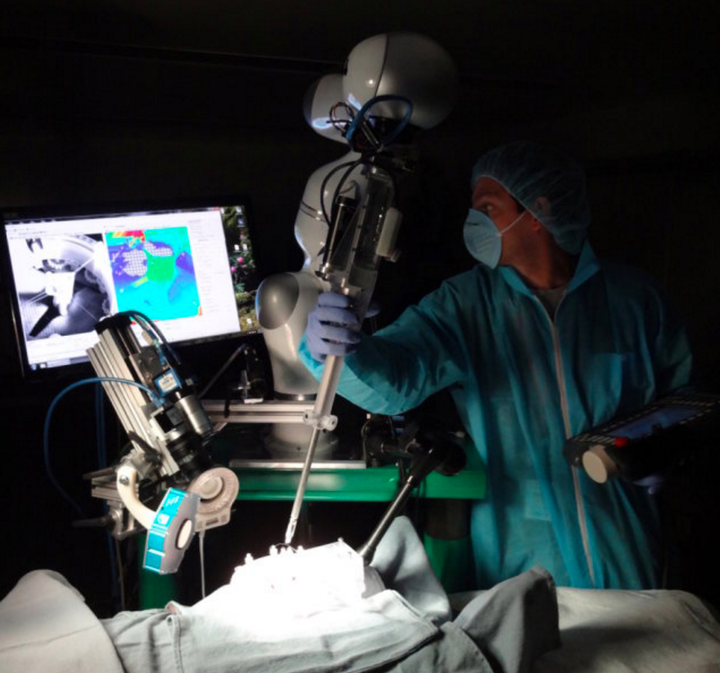For the first time, an unmanned robot has successfully performed surgery on pigskin as a replacement for soft tissue.
Surgeons and scientists from Sheikh Zayed Institute for Pediatric Surgical Innovation at Children's National Health System revealed the groundbreaking news in the paper Science Translational Medicine.
The Smart Tissue Autonomous Robot (Star) is groundbreaking in that it doesn't need to be guided by a surgeon's hands - which is how most of the robotics we use in modern day surgery works - but instead is supervised.

The achievement won't mean doctors will become redundant, rather it will increase the scope for higher success rates.
Previously, unmanned surgery was not an option because of unpredictabilities with human soft tissue. Depending on elasticity, minute changes might have to be made at the last moment, which requires a surgeon's expertise and thinking to adapt to the changes as they occur.
So how does STAR work?
Sciencedaily reveals how it overcomes the problem. "STAR uses a tracking system that integrates near infrared florescent (NIRF) markers and 3D plenoptic vision, which captures light field information to provide images of a scene in three dimensions. This system enables accurate, uninhibited tracking of tissue motion and change throughout the surgical procedure.
"This tracking is combined with another STAR innovation, an intelligent algorithm that guides the surgical plan and autonomously makes adjustments to the plan in real time as tissue moves and other changes occur. The STAR system also employs force sensing, submillimeter positioning and actuated surgical tools.
"It has a bed-side lightweight robot arm extended with an articulated laparoscopic suturing tool for a combined eight degrees-of-freedom robot."
At certain points, STAR also appeared to outperform surgery conducted by humans. Dr Peter Kim who worked on the project said:
"If you want to throw in 20 stitches, it is not enough that a human being does 19 out of 20 well. You have to do all 20 of them well to have a good outcome.
"This machine will consistently throw in 20 perfect sutures."

STAR was placed in competition with a manually operated robot and was found to have a higher accuracy rate.
However, it is advisable to approach cautiously.
Talking to the BBC, Mr Shafi Ahmed, from the Royal College of Surgeons of England, said he welcomed the idea but added: "We need to ask whether machines might be better at doing some parts of surgery.
"Obviously there are issues around the ethics and trust. At what point do you trust a robot?"
Would you be comfortable being operated on by an unmanned robot? Tell us in the comments below...
